Does anyone in Marvel ever say anything as winning as “Flash, Flash, I love you, but we only have 14 hours to save the Earth!” Does Wonder Woman or Batman ever fly blind on a rocket cycle? Has any other comic book adaptation ever had the wit and wisdom to put wings on Brian Blessed?
No, because these things only happen in the greatest superhero movie ever made: Flash Gordon.
The 1980 camp classic, which has been restored in 4K to mark its 40th anniversary, has a history of happy accidents following its hero's first appearance in a comic strip in 1934. Buck Rogers, another intergalactic hero, had already spawned novelisations and toys when King Features Syndicate – a subsidiary of the Hearst newspaper empire – approached Edgar Rice Burroughs with a plan to adapt John Carter into a comic strip. When the Tarzan author failed to agree terms, the company approached staff artist Alex Raymond to create a space-hopping rival.
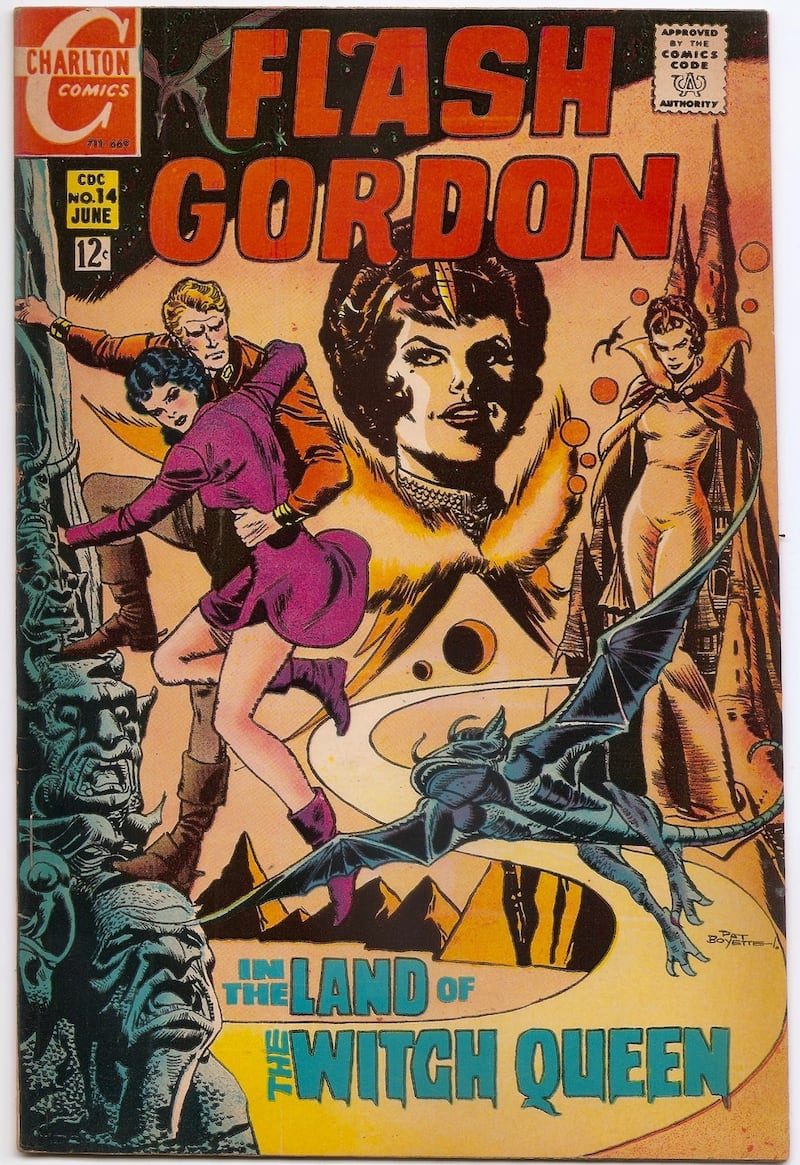
The result was Flash Gordon, a dashing polo player and Yale graduate who teams up with love interest Dale Arden and scientist Dr Hans Zarkov in order to prevent Earth from colliding with the sinister planet Mongo.
In common with Superman, Flash was banned under the Nazis but otherwise enjoyed a run as a daily strip from 1934 to 1992, and continued as a Sunday strip until 2003. It was syndicated in some 130 countries, including Ireland, from the 1950s. In the 1970s George Lucas attempted to make a film based on the Flash serial films of the 1930s. When he failed to acquire the rights from Italian super-producer Dino De Laurentiis, Lucas created his own Flash-enthralled space opera.
A young Arnold Schwarzenegger wanted the role but was denied because of his thick Austrian accent. (De Laurentiis later hired the future governor of California to play Conan the Barbarian)
The success of Star Wars prompted De Laurentiis to approach some of the most incongruous directors imaginable. Federico Fellini briefly optioned the Flash Gordon rights from the producer, but never made the film.
“He went to Fellini first,” recalls screenwriter Michael Allin. “And Federico said: Oh Dino, of course. And then he disappeared and it turned into a British production. I met Nic Roeg years before Flash Gordon and we always wanted to work together. I had a big picture one year called Enter the Dragon, and he had a big picture that year called Don’t Look Now. We hit it off immediately. He was the coolest dude on the planet at that moment.
“He called me a couple of years later from Claridge’s in London. He said: ‘I’m here with Dino; how about we write a movie for him? I said: ‘Tell me where and when; what’s the movie?’ He said: ‘It’s Flash Gordon’.”
Genocidal Ming
Together Allin and Roeg dreamed up a version that was “Adam and Eve being chased by a jealous God” in which a genocidal Ming the Merciless, Ruler of Mongo, depopulates the universe world by world, save for one female from each planet with whom he would repopulate that world.
De Laurentiis, however, wanted something less biblical. He soon approached Sergio Leone, who declined because he believed the script was not faithful to the original Raymond comics. Finally he hired Mike Hodges, the English writer-director of Pulp and Get Carter.
“I have no idea why he chose me,” laughs Hodges. “Nic was a friend of mine and he suggested me. I met with Dino and I looked at the script and I said: ‘Look, I’m completely the wrong director. I’m not someone who is into special effects.’ But Dino persisted and eventually I agreed, persuaded by my two sons, who really wanted me to make it.”
"The thing about Flash Gordon is that he's one clown short of a circus. Flash Gordon is not very bright"
In the meantime, De Laurentiis drafted in Lorenzo Semple Jr, the writer behind Batman, the kitsch hit 1960s TV series starring Adam West, and set out to find his Flash Gordon. Originally he approached Kurt Russell, who turned it down because he felt the character was one-dimensional. A young Arnold Schwarzenegger wanted the role but was denied because of his thick Austrian accent. (De Laurentiis kept in touch and later hired the future governor of California to play Conan the Barbarian.)
“It was a very difficult part to cast, to be honest with you,” says Hodges. “I saw a lot of actors. And none of them were suitable at all. Then Dino’s mother-in-law – who is an English woman – was watching a television programme in America called Celebrity Squares. And she saw Sam Jones in one of the squares. And she was right! Sam got a lot of rotten tomatoes thrown at him when the film first came out. But I think he’s absolutely perfect. He’s got that lantern jaw. He’s both very physical and he had an innocence about him which is quite rare nowadays and was rare then. I can’t think of anybody better than Sam.
“The thing about Flash Gordon is that he’s one clown short of a circus. Flash Gordon is not very bright. When I’m in one of my more facetious moods, I’ve said that he’s a metaphor for American foreign policy, which has always been erratic and mind-boggling and imperialist. So I was very grateful when we finally found a person who could play the role.”
Trying his luck
In a priority-revealing quote from Dino: The Life and Films of Dino De Laurentiis, the movie mogul says, “He was a blond, buff, American boy, in great shape and even capable of acting.”
In 1977 Sam J Jones, a former Marine and semi-pro footballer with the Seattle Flyers, picked up a magazine featuring an interview with Clint Eastwood. In the months that followed he talked endlessly about going to Hollywood to try his luck as an actor.
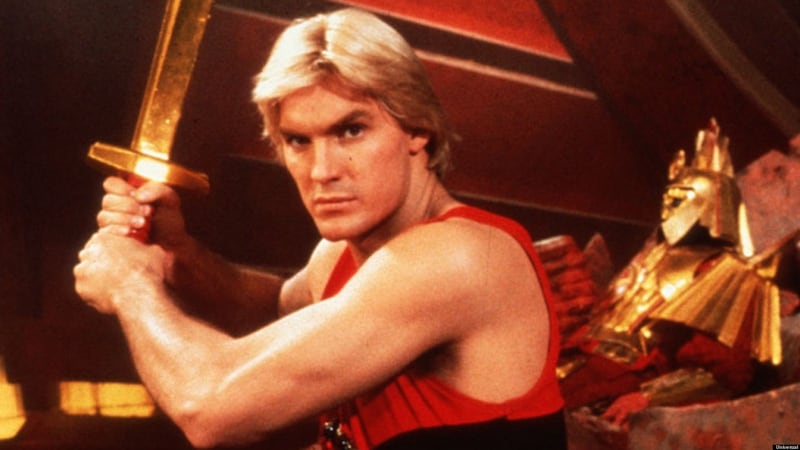
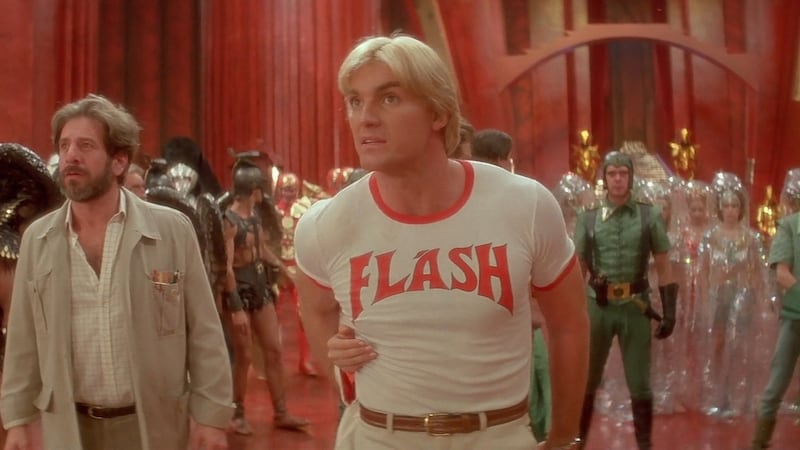
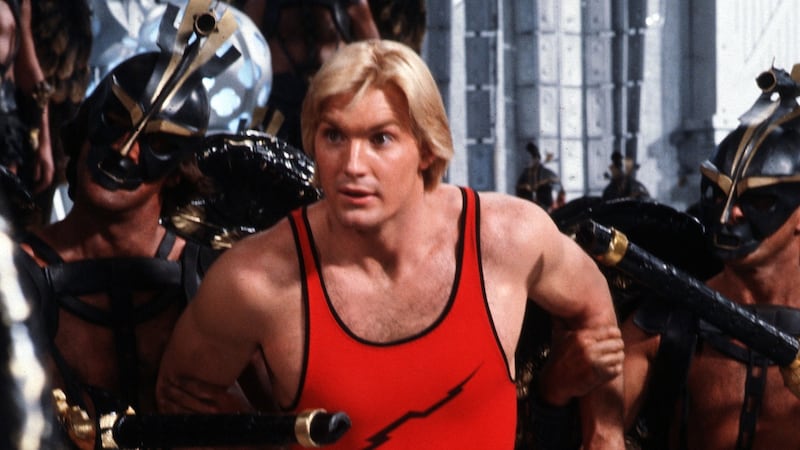
“I was a bartender at a place called Pier 70 in Seattle,” he recalls. “I was setting up with a couple of the bus boys; nobody else was there. This sharp-looking guy walked in, about my age. He had a suit on. Really classy guy. He asked for a glass of water. I served him. And he said to me, ‘What are you going to do with your life?’ And I said, ‘Well, I’m going to go to Hollywood and I’m going to be an actor.’
“And he looked at me and when he caught me with those eyes; his eyes just penetrated my whole being. And he looked at me very boldly and he says: ‘Well, why don’t you stop talking about it and just do it?’ And I went down to grab something and when I got back up he was gone. And I said to the other two guys: ‘Hey, where’s that sharp-looking dude in the suit?’ And they said, ‘Sam, what are you talking about? Nobody has been here except the three of us.’
“I knew right then and there it was probably a visitation.”
It’s quite a story, though no more colourful than any number of anecdotes from the set of Flash Gordon. An international cast and crew – not always capable of understanding one another – was assembled, including Canadian Melody Anderson as Dale, Sweden’s Max von Sydow as Ming the Merciless, Israeli Chaim Topol as Dr Zarkov, Italian-Russian Ornella Muti, Welsh man Timothy Dalton as the dashing Prince Barin and, most memorably, English man Brian Blessed as Prince Vultan.
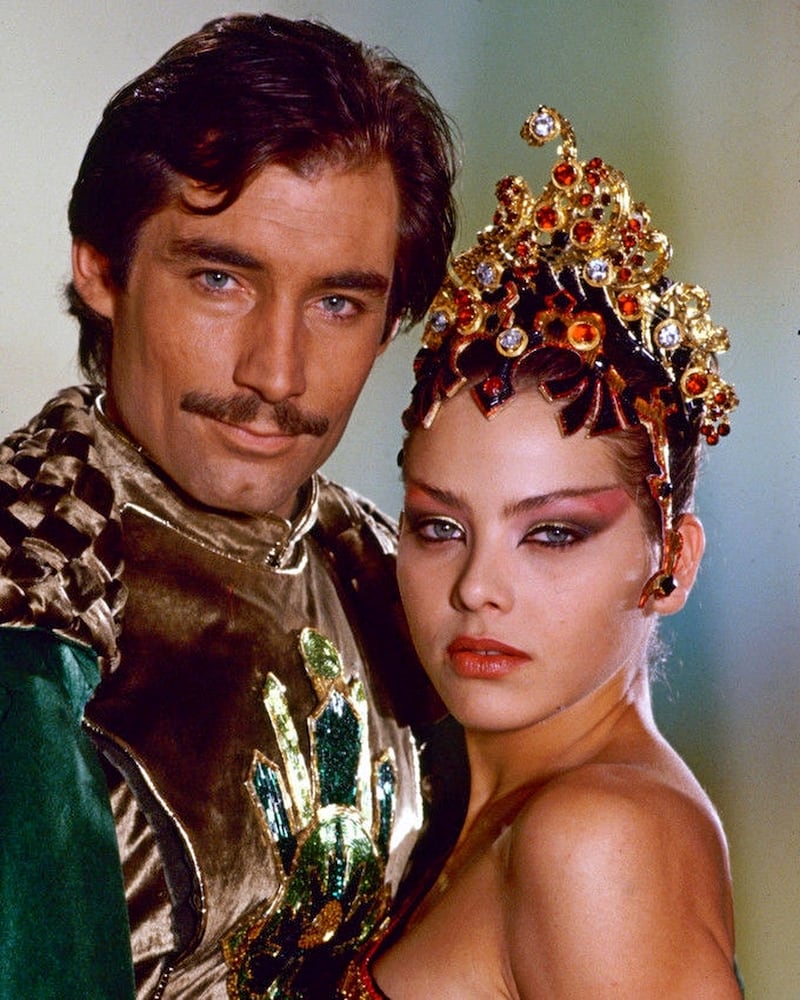
“The English thought they knew, and the Italians thought they knew, and the actors were caught in the middle of all this confusion of, ‘What’s going on?’ ” recalls Melody Anderson. “It was, well, an interesting 4½ months.”
Partly due to time constraints and partly to the eye-popping designs, much of the film was improvised during production. The thickly wooded Forest Kingdom of Mongo became an issue when the crew realised the camera couldn’t fit through the trees. They were more than a third of the way into the shooting schedule before coming up with the liquid particles that would form the Mongo skyline. And there were Danilo Donati’s incredible costume designs to negotiate.
"I had to ask the crew not to laugh at the rushes," says Hodges. "Because Dino wondered why they were laughing"
“I could never anticipate anything until I was actually on the set with the cast and the costumes on,” recalls Hodges. “The costumes limited the movements of the actors. The designer was a lovely man but he didn’t speak any English and my Italian was zero.
“The film has an improvisational feeling to it. We had to make do with whatever Dino provided us with. That was fun once you got the hang of it. As a director, with most films you have complete control. With Flash Gordon, that was not possible and I had to adapt accordingly. There were so many comedic episodes. It was all madness. But it was delicious madness.
“When you asked a question, Dino would say: ‘Mike, how many films you make? I make 300 films.’ It was always 300. The number never changed.”
Rave notices
A hit soundtrack by Queen helped the film towards a £14 million take in the UK alone. The North American box office – $27,107,960 – was modest by comparison, even with rave notices from Roger Ebert and Pauline Kael. It certainly didn’t help that Sam J Jones had disagreements with De Laurentiis and departed prior to post-production. That falling-out resulted in some of Jones’ dialogue being dubbed by professional voice actor Peter Marinker. It also meant there was no Flash Gordon to promote Flash Gordon. But rumours that Jones was entirely redubbed are greatly exaggerated, says Hodges.
After Christmas, Sam didn't come back. It affected things in America because you have to have your star on the circuit for a film like that. We had to send Ming"
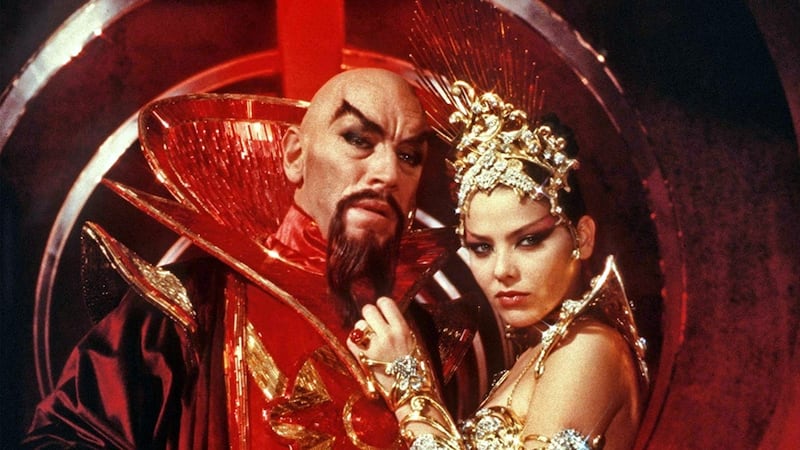
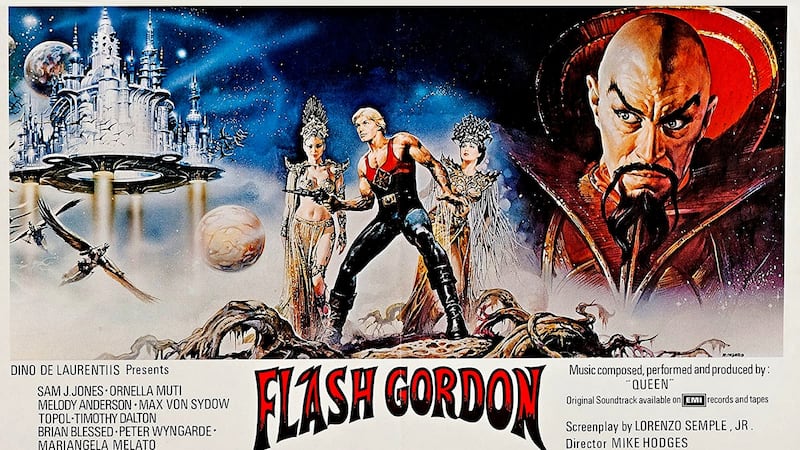
“I think when Sam got the role, he got an agent or a manager or something,” he says. “That’s what happens when you land a big role. An entourage arrives to take a percentage of the salary and pretend they can get more money for their client. So I think they were trying to negotiate with Dino to extract more money. The disagreement wasn’t directly between Sam and Dino.
“So after Christmas, Sam didn’t come back. It didn’t matter to me because the principal photography was already done. There were some lines – a limited number – and some fighting noises that had to be revoiced, so I just got an actor to do an impersonation. There were some wide shots where I had to use a double, but I was able to finish the film without any problem at all.
“I do think it affected things in America because you have these talk shows, and you have to have your star or your lead actor on the circuit for a film like that. We had to send Ming.”
Over the four decades since it premiered, Flash Gordon has gained a huge cult following,a 2018 making-of documentary film, Life After Flash, and celebrity champions in Edgar Wright and Seth McFarlane. The latter persuaded Sam Jones to get back into Lycra for Ted and Ted 2.
“I had to ask the crew not to laugh at the rushes,” says Hodges. “Because Dino wondered why they were laughing. I mean it was an adventure for children at one level, and you had to have that kind of belief in cinema that young people have. So somewhere between Dino and me being really rather facetious about it all, we seemed to manage something quite unique.
“If you’re young you can watch it and take the adventure seriously. And if you’re an adult, you’ve got other things to amuse you.”
Flash Gordon Special 40th Anniversary 4K restoration is available from August 3rd












